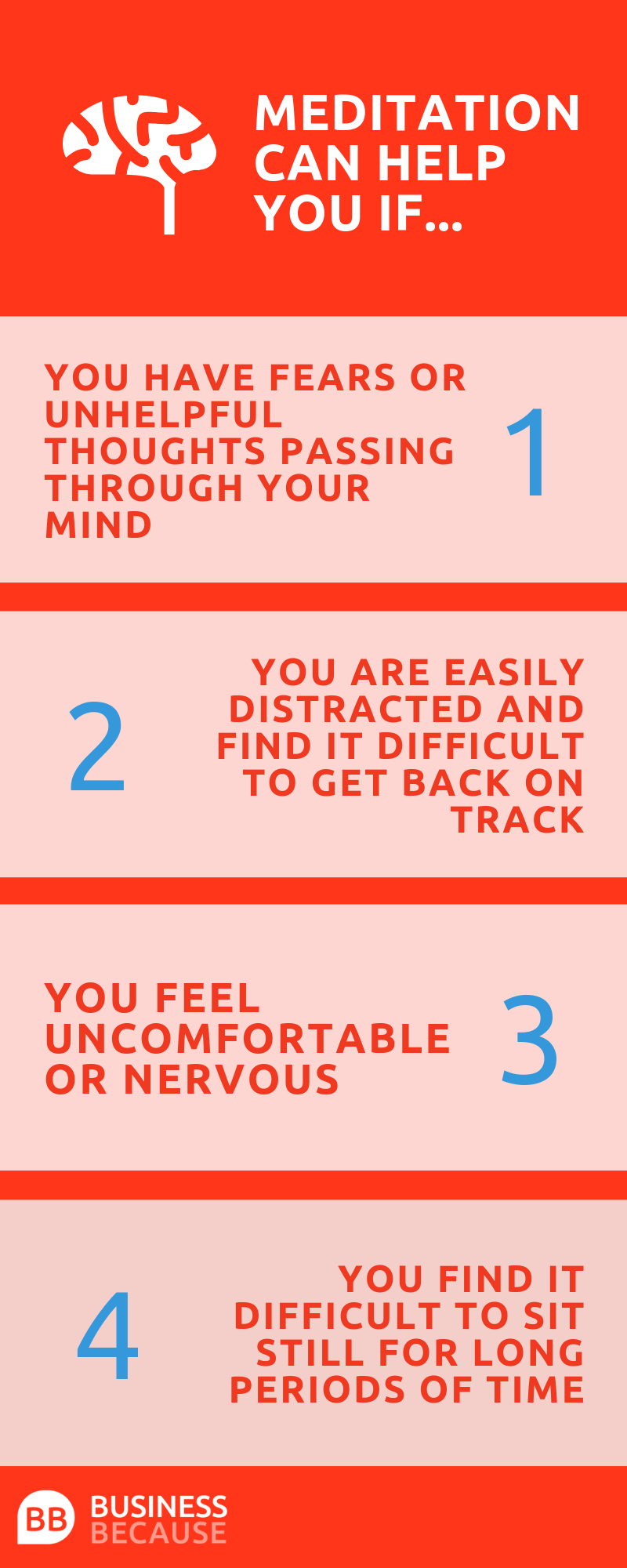How Mindfulness Could Help You Ace Exams
By Bara Sapir for Business Because
High-stakes exams such as the GMAT and GRE are known to trigger harsh self-judgment and insecurity, and derail even the most confident of MBA hopefuls.
While many GMAT test-takers suffer through discomfort by focusing on mastering the content, most could easily improve their outcomes by incorporating mindfulness meditation into their study regime.
This isn't as hard as it sounds: meditation is much easier to begin than most people believe. You don’t need any equipment and you can meditate right now, at no cost, sitting in your chair.

Mindfulness meditation could improve your test score by 16%
For the uninitiated, meditation involves quieting your mind and body through a focused activity such as breathing, walking, or even watching a candle flame. The training offers a continual opportunity to redirect back to the breath, step, or flame as the mind naturally shifts away.
As a result, you are able to feel more present in the moment. This is particularly powerful for test takers because it improves concentration and increases calm, focus, and clarity.
Science validates this outcome, too. By incorporating mindfulness meditation, even two weeks prior to a test, researchers found a 16% improvement on GRE reading comprehension performance alone.
This statistic alone makes you wonder why more test takers aren’t incorporating this technique into their study preparation.
I’ve heard many reasons for avoiding meditation—from people not having enough time, to it not being their ‘thing’, being too ‘New Age’, or them simply not being able to ‘switch their brain off’. Some test takers even assert that the pressure helps them to focus.
To this I say: just give it a try.
Many high-performing professionals, from athletes to business moguls, cite mindfulness as part of their winning formula, and it should be part of yours as well.
Whether you are preparing for the test or taking it, the practice of meditation can help with situations that impact performance.
Instructions for a basic breathing meditation
Below is a basic breathing mediation. Practice it every day. You’ll get some benefits immediately, but in about two weeks you’ll likely notice how it affects your test taking. The longer you practice, the more quickly you’ll notice your ability to stay present.
Set aside 10-15 minutes for this exercise each day.
1. Find a comfortable place to sit or lie down, in a way you can stay relaxed and alert. You can keep your eyes open, closed, or with lowered eye lids that soften your gaze.
2. Set an intention for yourself: to be a better test taker with greater awareness, focus, and calm.
3. Begin by taking a deep inhale, holding your breath for two to three seconds, then exhale. Repeat three times.
4. Next, breathe naturally and focus your attention on the inhale and exhale of your breath, aware of sounds and feeling as it flows through you.
5. Your mind may wander or you may become distracted by thoughts or sensations in your body. This is normal and what the mind does. Notice it. Then gently redirect your attention back to your breath.
6. When time is up allow yourself to relax more deeply and take one final deep breath. Take a moment to appreciate the amount of time you’ve given yourself to slow down.
Meditation’s release from your thoughts and emotions will help you best meet the GMAT and the GRE’s tough demands, twists, and turns. Remember that you always have a choice to observe each question with curiosity rather than frustration. Mindfulness invites you to be present with what is.
This will enable you to take better advantage with what could be. After all, a 16% improvement on reading comprehension on the GRE or GMAT could make all the difference with your chances of getting into your dream school.
Bara Sapir is a GMAT expert and CEO and founder of City Test Prep (CTP), a test preparation and coaching company.


